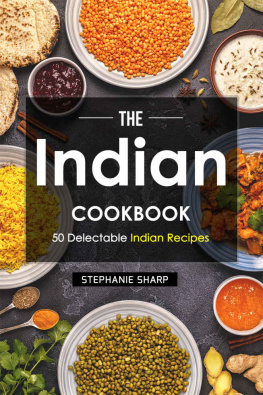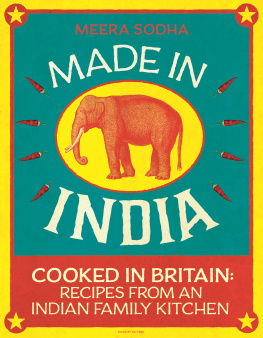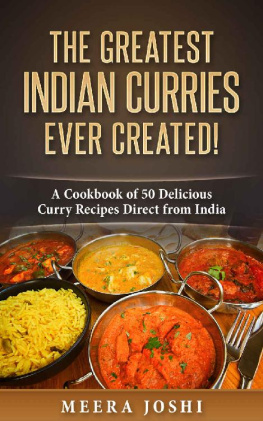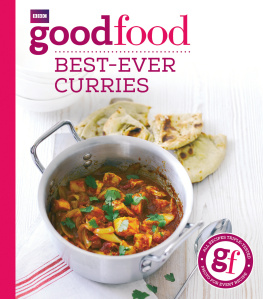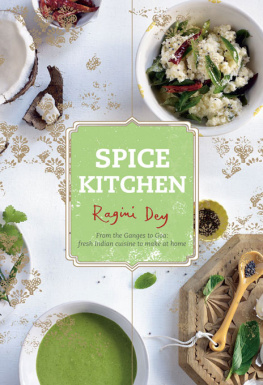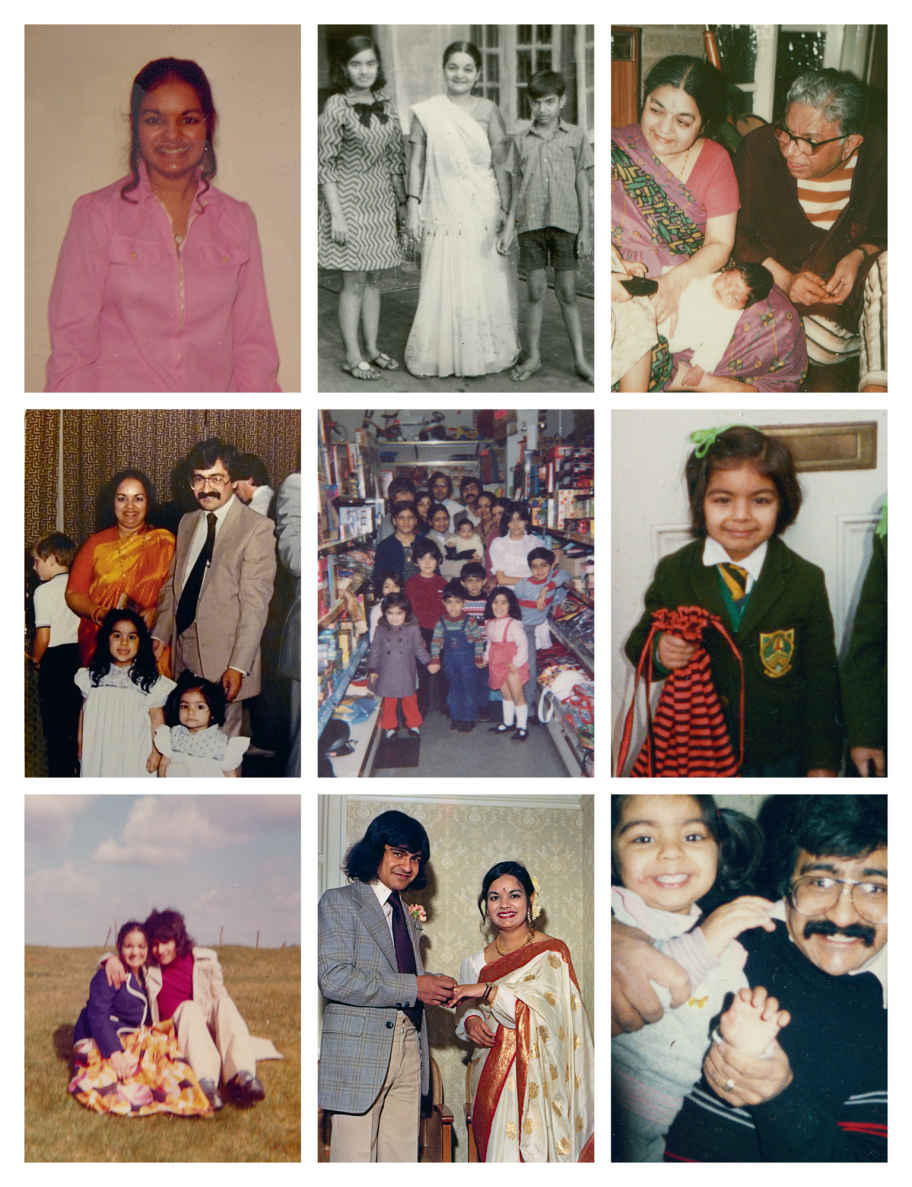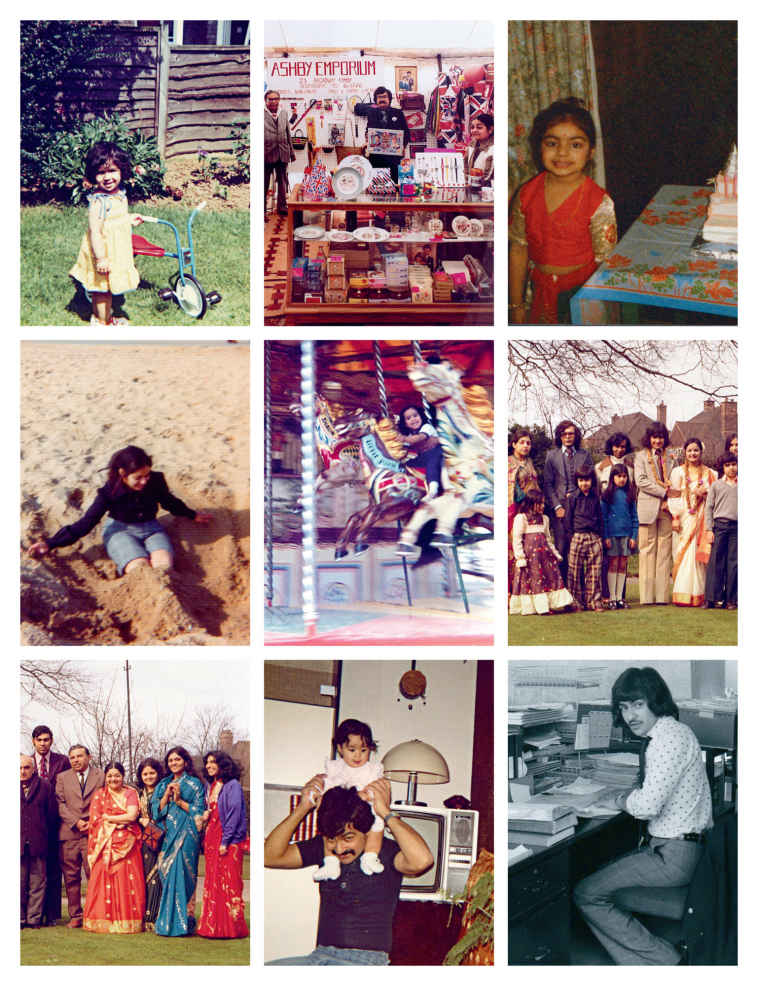CONTENTS
ALTERNATIVE CONTENTS
Great first-timer recipes
Something for the weekend
Midweek meals (30 minutes or so)
Cooking in advance
Quick things to have on the side (10 minutes or so)
Get the kids involved
Store-cupboard curries
Party food
Low-fat
Vegan
Best for tiffins (packed lunches)
For the freezer
Gluten-free (and good with rice)
Dairy-free
List of Recipes
Introduction
An Indian kitchen can be anywhere in the world. Mine just happens to be in London.
Ive never lived in India, but I grew up in England eating the same food my ancestors have eaten for hundreds of years and which I still cook in my kitchen, every day.
My familys home cooking is unrecognizable from a lot of the food that is served up in most high-street curry houses across the UK; ours is all at once simple, delicious and fresh. Real Indian home cooking is largely an unknown cuisine, and its my love for what we Indians really eat at home that has led me to share these recipes with you now.
My grandparents kitchen started in Gujarat, where this story begins. Gujarat is the area north of Mumbai and south of Pakistan, with Rajasthan to the east and the Arabian Sea to the west. The Arabian Sea is where my grandfather Mathuradas Lakhani happened to be looking when his curiosity to find out what lay across it got the better of him. Along with his wife, his father and his brother, he set sail for Kenya to begin a life there, taking with him all the family recipes.
Africa back then was a land of opportunity for anyone with a good idea. He had many, and, along with his father and brother, he set up Kenyas first printing press, a Coca-Cola bottling factory and, later, when he moved to Uganda, a grain mill. With his new-found prosperity he employed a cook, and so my mother grew up not cooking, but being cooked for, until she arrived in England.
My familys arrival in this country was sudden and part of a well-documented episode in British history. Idi Amin, tyrant, dictator and then-president of Uganda, woke up one day in 1972 and gave all Asians living there 90 days notice to leave the country before he would start to kill them. Along with thousands of others, my family left everything: their homes, businesses, money and friends. They arrived in Lincolnshire with one suitcase between all five of them and 50 with which to start a new life.
While the backdrop to their lives changed in every way the country itself, the language, the people, the culture, the weather and local ingredients their food did not. My grandparents went to work, and my mother reassembled our Indian kitchen in Lincolnshire and carried on cooking the family recipes.
She met my father, had me and my sister, and continued to cook, day in, day out, to feed her growing family, arranging whatever she could afford into various pots and pans to magical effect, conjuring up tastes and smells of the past and linking us, in an instant, to our ancestral home.
At the same time, she started to use local ingredients. Indian cooking can be adapted to any place by encompassing whatever ingredients are available. As we lived in Lincolnshire, a county that abounds in local produce, she was able to use gorgeous beetroot, rhubarb and squash in her cooking, as well as fish from the nearby docks in Grimsby and local meat (including the famous Lincolnshire sausages).
Whichever vegetables or meat she used, every day there would be fresh hot chapattis made in minutes, gobbled in seconds. She would cook dishes so fragrant with cloves, cinnamon and cumin that theyd make your mouth water and your belly rumble, and her sweetly spiced puddings filled the house with smells that would make you weak at the knees. All these dishes were cooked with love, instinct and her trusty wooden spoon the same spoon that she bought just days after arriving in the UK with barely a penny to her name.
My mothers spoon cast a spell over me from a young age, and it is to her that I owe my love of cooking. Using all the culinary knowledge that she passed on to me, Ive created this collection of recipes so that you can make the same delicious, fresh-tasting food in your own home.
Some of the dishes in this book are ancient family recipes which have never been recorded or written down until now. They were passed down from woman to woman in our family, with easy-to-remember anecdotes for when cooking alone, with sayings such as the mango should be as hard as a cricket ball and the dough as soft as your ear lobe, or when the spoon sticks up in the mixture, its ready. Many measurements were in handfuls, bowls and unique boxes and tins.
Other recipes are my mothers, all of which apply Gujarati know-how and techniques to local ingredients. A couple of her recipes are Ugandan.
And a few are mine and have come into my kitchen (and heart) by way of friends, my travels far and wide across India and my experimentation in the kitchen using Indian flavours.
Not everything in this book is a curry (a term I use loosely for dishes with sauce), and there are no set rules. Many dishes are frugal and thrifty, turning humble vegetables, store-cupboard ingredients and even leftovers into something delicious.
I hope this book will allow you to experience what we consider to be real home-cooked Indian food, and will also give you a greater understanding of different ingredients and techniques so that you can come up with your own recipes using your own instinct, with just a few key spices and whatever happens to be in your fridge.
On my last birthday, Mum passed her treasured wooden spoon over to me as a present. With it was a note that simply read, Happy cooking. I hope, like that spoon, this book fills your kitchen with the same happiness as it has done ours.
A word on Indian cookery
Indian food has a reputation for being intimidating and complicated, but this is a myth. The majority of Indian home cooking is fresh, simple and quick, and Im on a mission to show you just how easy it is.
This book is written for everyone, from first-timers to seasoned cooks, and for those who love Indian food but dont know where to start.



